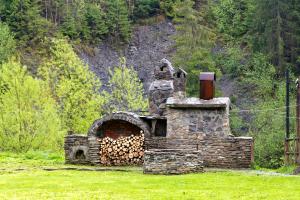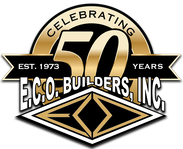Designing Outdoor Living Areas with Fire Features: Fire Pits and Fireplaces as Functional Focal Points
As homeowners expand the concept of outdoor living beyond the occasional barbecue, fire elements are becoming essential design components. These features provide structure to open-air environments, allowing for strategic zoning that creates a sense of comfort and continuity between indoor and outdoor living.
According to Elwin Ordoyne, Vice President of E.C.O. Builders Inc. in Slidell, Louisiana, functionality and layout are key considerations when integrating fire pits or fireplaces into an outdoor setting. “The goal is to design around the fire feature, not just install one. Placement, materials, and scale all matter when building outdoor areas meant for long-term use,” said Ordoyne.
Fire pits are commonly favored for their versatility and social orientation. Their circular or square design encourages open seating arrangements and provides warmth for multiple guests, making them well-suited for casual gatherings. These installations can be gas-powered for ease or wood-burning for a more rustic atmosphere. Material selections range from poured concrete to natural stone, depending on the desired aesthetic and compatibility with surrounding surfaces.
Outdoor fireplaces, by contrast, provide more vertical structure and can act as a visual backdrop or divider in an open backyard. Built-in fireplaces offer opportunities to incorporate adjacent seating walls, built-in storage, or integrated TV alcoves for all-season use. While they take up more space and require additional planning for chimney venting and code compliance, they offer strong architectural presence and wind protection—benefits that enhance usability in areas with variable weather conditions.
Both fire pits and fireplaces require careful attention to safety codes, setbacks, and ventilation requirements. Local ordinances often regulate minimum distances from combustible structures, overhangs, and property lines. In Louisiana and the surrounding region, wind direction, seasonal humidity, and elevation changes also influence placement.
Material selection plays a dual role in aesthetics and function. Heat-resistant materials such as firebrick, lava rock, and steel inserts are common components in both fire pits and fireplaces. Surrounding finishes, such as flagstone, stucco, or brick, are chosen based on visual cohesion with patios, pergolas, or exterior facades.
From a planning standpoint, integrating a fire feature early in the landscape design process is ideal. Early consideration allows for proper trenching of gas lines, drainage accommodations, and the coordination of lighting or audio features around the space. Late-stage additions may require surface demolition or structural modification, adding cost and complexity to the project.
Proximity to the main structure is also a factor. Fire features placed too far from the primary residence may lose their utility during colder months or become disconnected from primary activity areas. Conversely, placing a fire element too close to the home may create safety concerns or ventilation issues. A balanced approach allows the fire feature to function as a centerpiece without interfering with movement, airflow, or adjacent outdoor features such as kitchens, spas, or dining areas.
E.C.O. Builders Inc. has observed a rising preference for hybrid configurations that combine fire and water elements or incorporate both fire pits and fireplaces in larger outdoor projects. These multi-zone layouts enable homeowners to use their outdoor space in different ways throughout the year, with the fire features acting as flexible seasonal anchors.
“Designing outdoor spaces with fire elements is no longer an afterthought—it’s part of the core strategy for long-term use,” said Ordoyne. “These features aren’t just functional. They bring visual balance, warmth, and purpose to otherwise open or underused areas.”
Lighting design also plays a role in the effectiveness of fire installations. Soft, indirect lighting near the fire zone helps maintain ambiance without overwhelming the natural glow of the flame. In larger yards, path lighting and accent fixtures guide movement and support safety.
Maintenance considerations should also be addressed early in the design. Gas fire pits require periodic inspection of valves and burners, while wood-burning installations may need ash removal and spark guard replacement. Drainage beneath the unit, especially in areas prone to heavy rain like southeast Louisiana, is essential to prevent pooling and material degradation.
As climate and lifestyle trends continue to influence outdoor living expectations, the demand for custom-built, integrated fire features is expected to grow. Fire pits and fireplaces are no longer limited to luxury projects; they now serve as practical, functional design features in outdoor spaces of all sizes.
For homeowners exploring new ways to extend the comfort and usability of their backyard spaces, fire features offer a clear point of convergence—where atmosphere, warmth, and gathering naturally come together.
Morgan Thomas
Rhino Digital, LLC
+1 504-875-5036
email us here
Visit us on social media:
Facebook
Legal Disclaimer:
EIN Presswire provides this news content "as is" without warranty of any kind. We do not accept any responsibility or liability for the accuracy, content, images, videos, licenses, completeness, legality, or reliability of the information contained in this article. If you have any complaints or copyright issues related to this article, kindly contact the author above.
Discount Custom Cabinets Expands Multi-Family Cabinet Solutions to Meet Growing Developer Demand
Lakeith Kentrell Hudson Introduces Spiral Semantics: A Framework for Navigating Truth, Perception, and Duality
RF Filter Market to Witness Comprehensive Growth by 2031
Kalendarium
Więcej ważnych informacji
 Jedynka Newserii
Jedynka Newserii

 Jedynka Newserii
Jedynka Newserii

Konsument

Jednorazowe opakowania z plastiku mają do 2030 roku zniknąć z lokali gastronomicznych. Przekonanie klientów do pojemników wielorazowych może być wyzwaniem
Unijne przepisy zobowiązują firmy z branży HoReCa do ograniczenia w perspektywie 2030 roku jednorazowych opakowań z tworzyw sztucznych i zastąpienia choć części z nich opakowaniami wielorazowymi. Choć wielu Europejczyków pozytywnie odnosi się do oferowania opakowań wielorazowych przez lokale gastronomiczne, zaangażowanie użytkowników w zwrot pojemników może się okazać wyzwaniem.
Handel
Zbliża się szczyt UE–Chiny. Głównym tematem spotkania będzie polityka handlowa, w tym cła

Unia Europejska i Chiny odpowiadają łącznie za niemal 30 proc. światowego handlu, ale Europa wciąż ma ogromny deficyt handlowy w wymianie z Państwem Środka. Ostatnio relacje między Pekinem a Brukselą były pełne napięć, choćby w kwestii europejskich ceł na elektryki, chińskich ograniczeń eksportu metali ziem rzadkich, czy braku równowagi w dostępie do rynków. Szczyt UE–Chiny odbędzie się ponad półtora roku po poprzednim.
Polityka
Dane statystyczne pomogą przyspieszyć rozwój turystyki. Posłużą również do promocji turystycznej Polski

Główny Urząd Statystyczny we współpracy z resortem turystyki buduje nowoczesny portal analityczny Turystyka+. To interaktywne narzędzie, które umożliwia śledzenie zmian i porównywanie danych. Celem projektu jest wsparcie rozwoju turystyki na wielu poziomach – nie tylko krajowym, ale również lokalnym i regionalnym. Ma on być pomocny zarówno w podejmowaniu decyzji politycznych dotyczących infrastruktury turystycznej, jak i dla przedsiębiorców, co ma się przełożyć na rozwój sektora i gospodarki.
Partner serwisu
Szkolenia

Akademia Newserii
Akademia Newserii to projekt, w ramach którego najlepsi polscy dziennikarze biznesowi, giełdowi oraz lifestylowi, a także szkoleniowcy z wieloletnim doświadczeniem dzielą się swoją wiedzą nt. pracy z mediami.










.gif)

 |
| |
| |
|